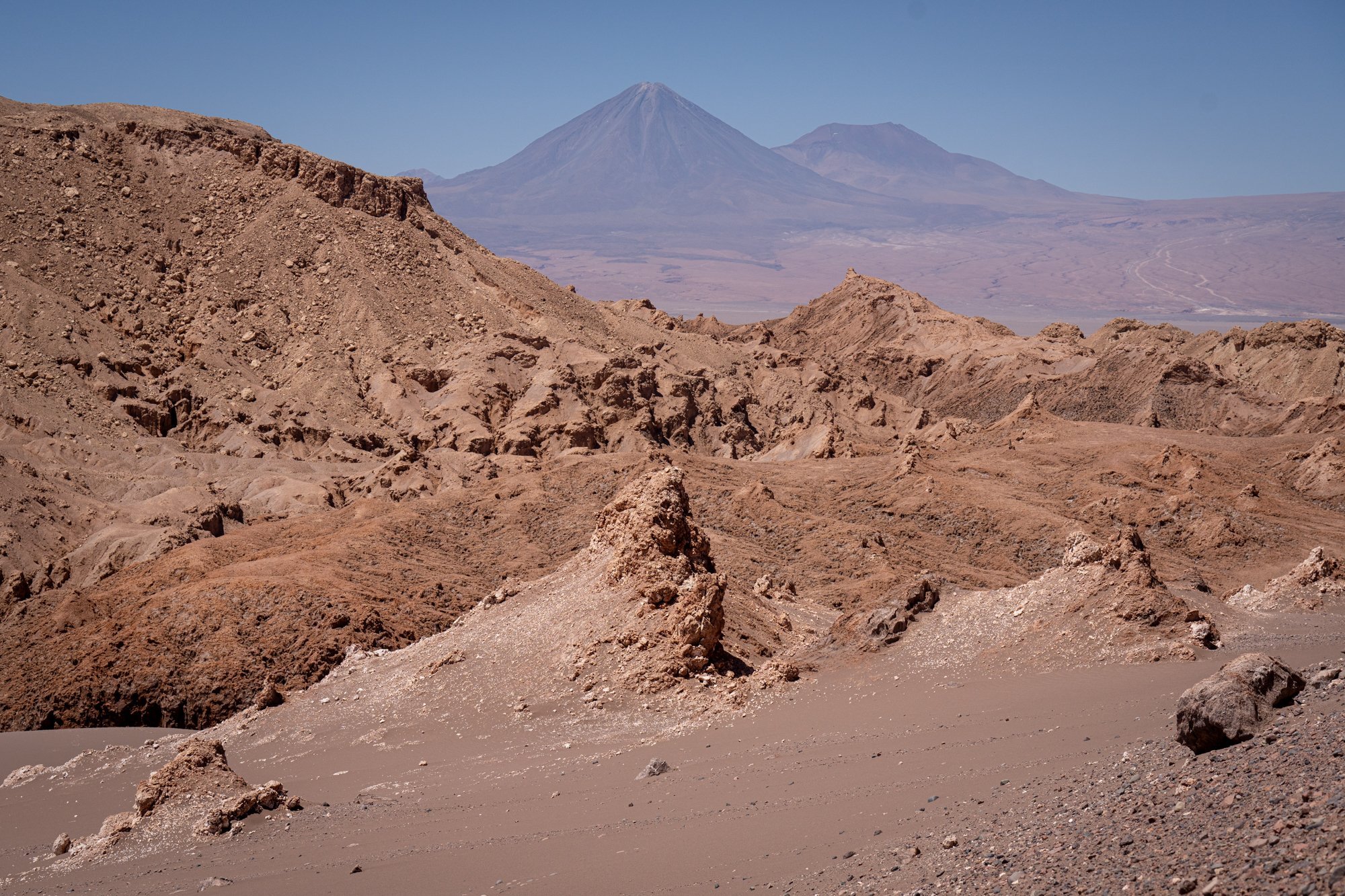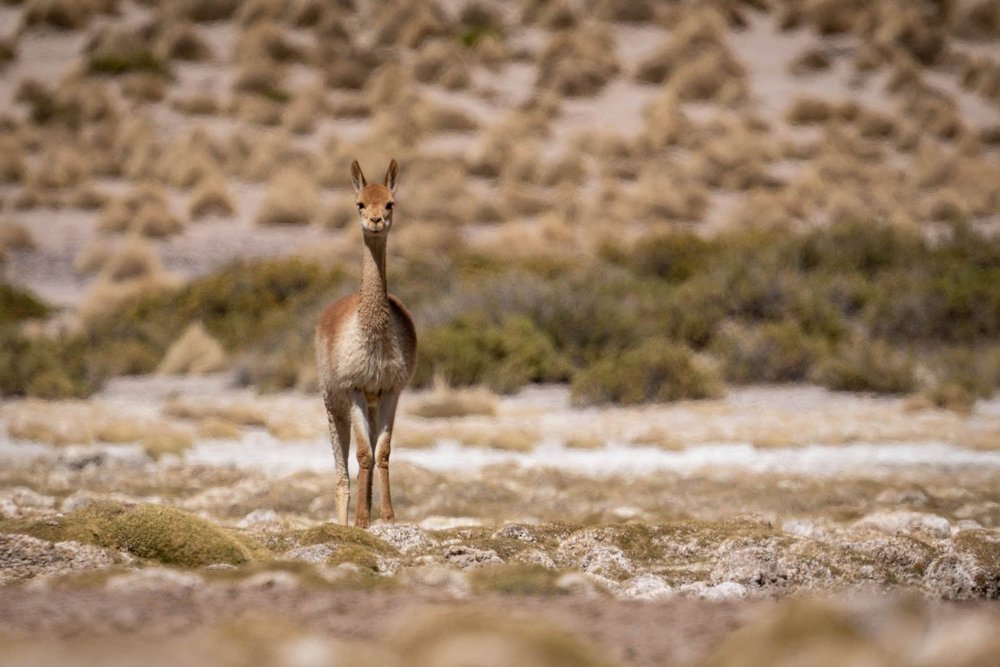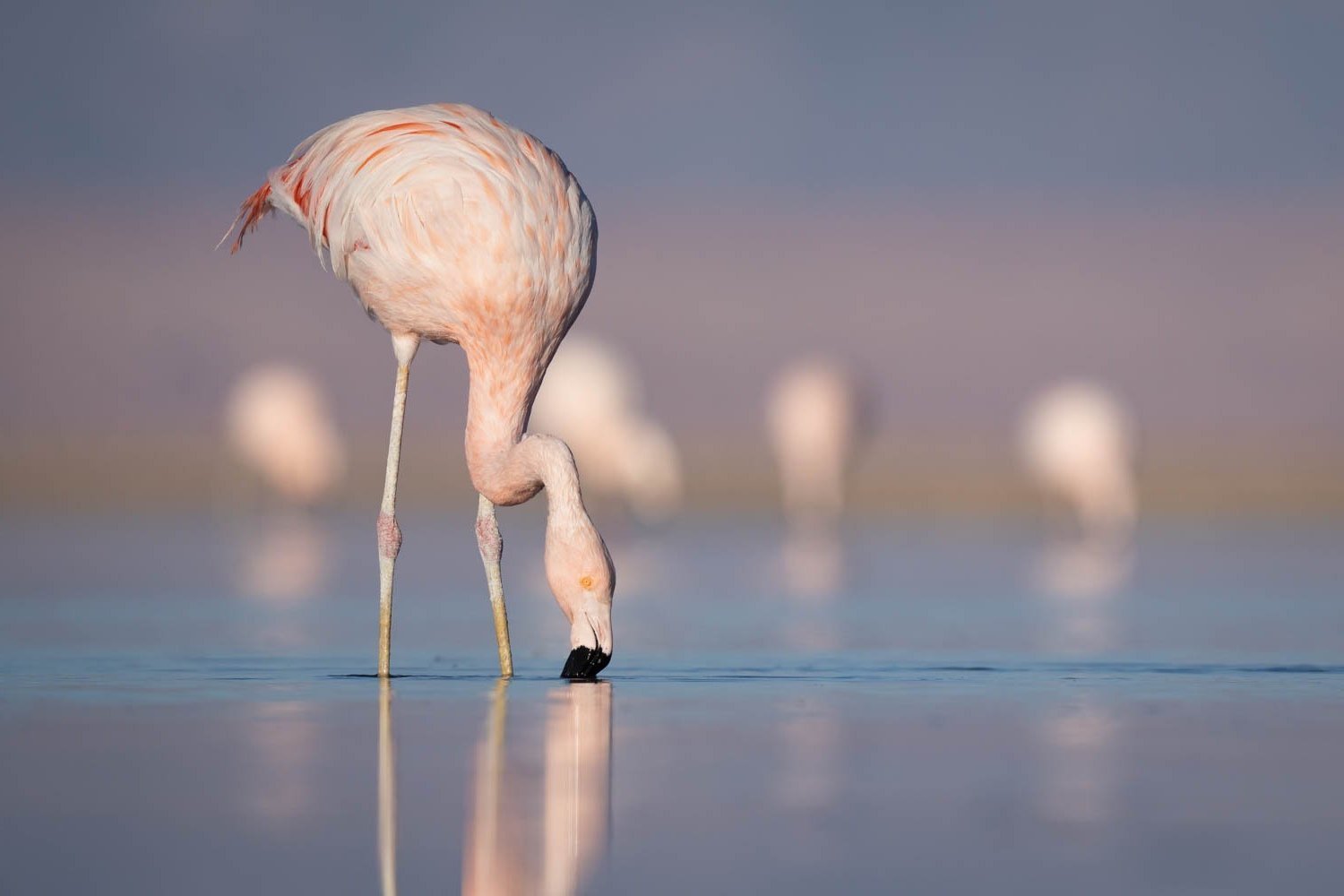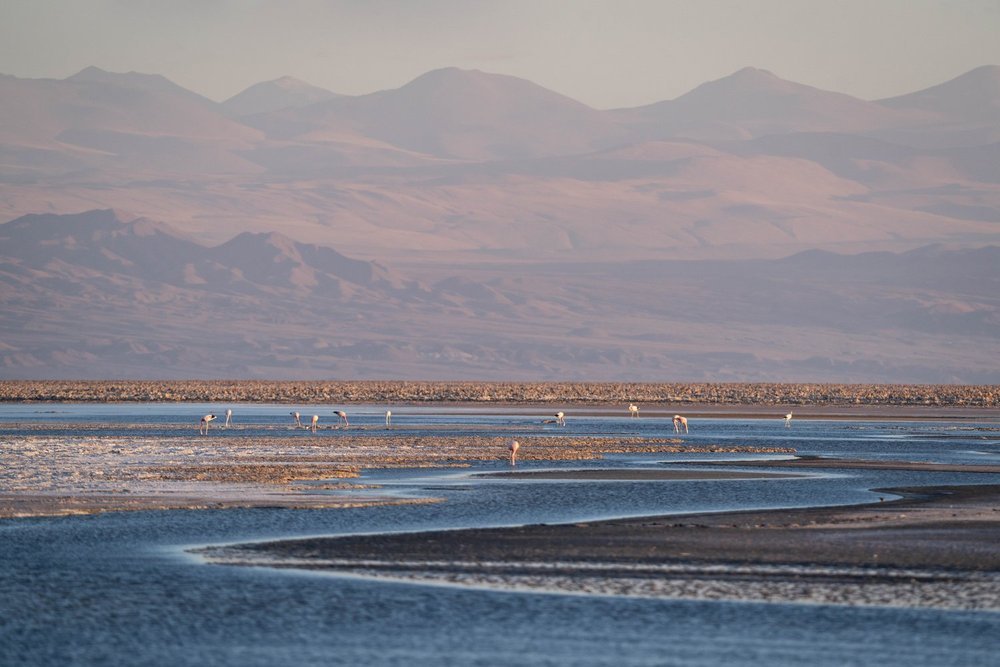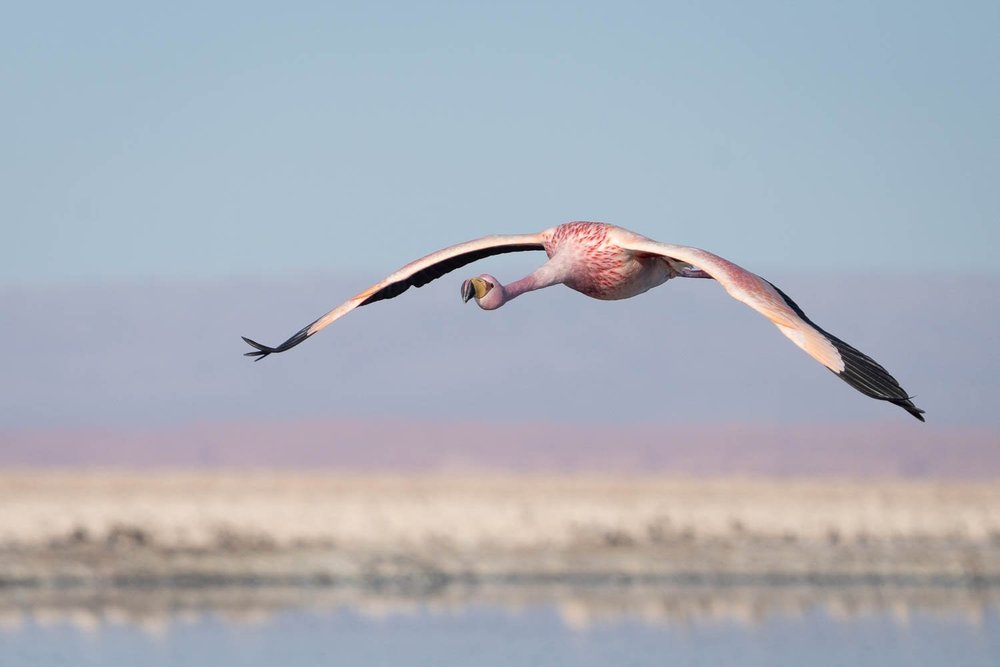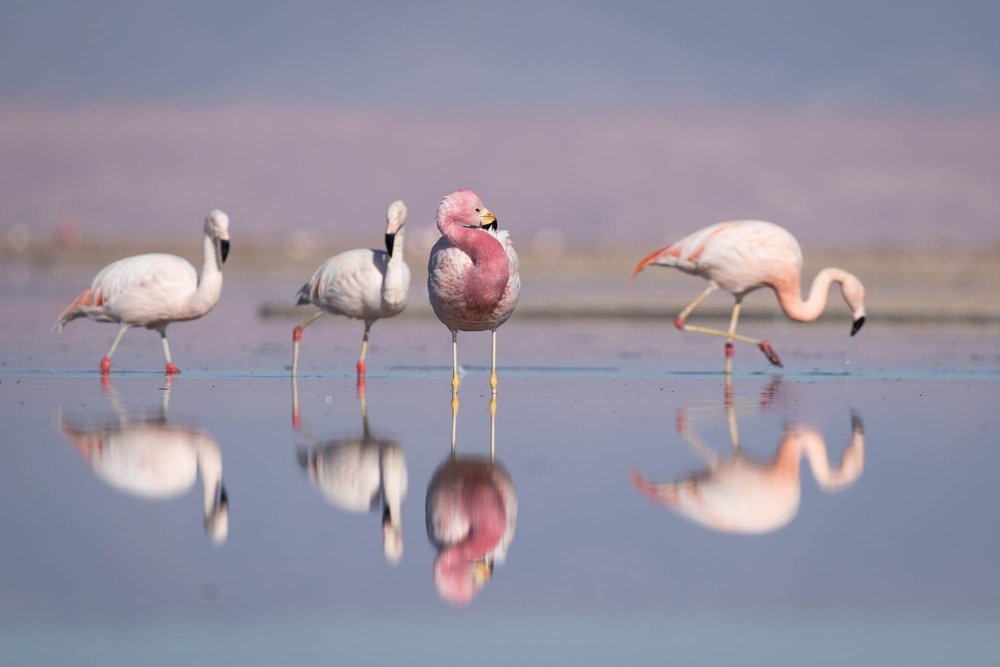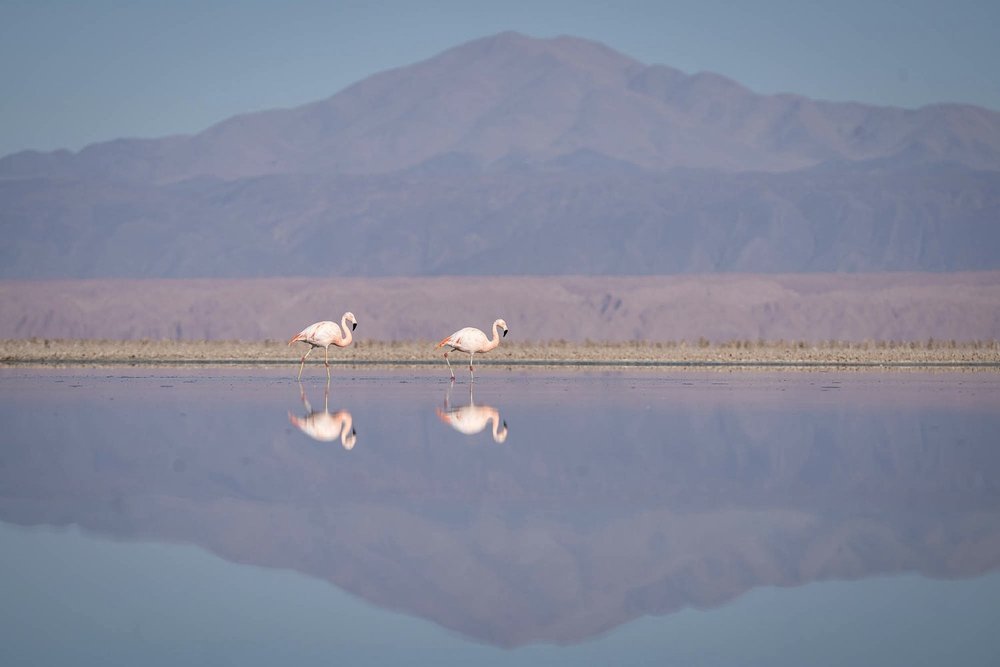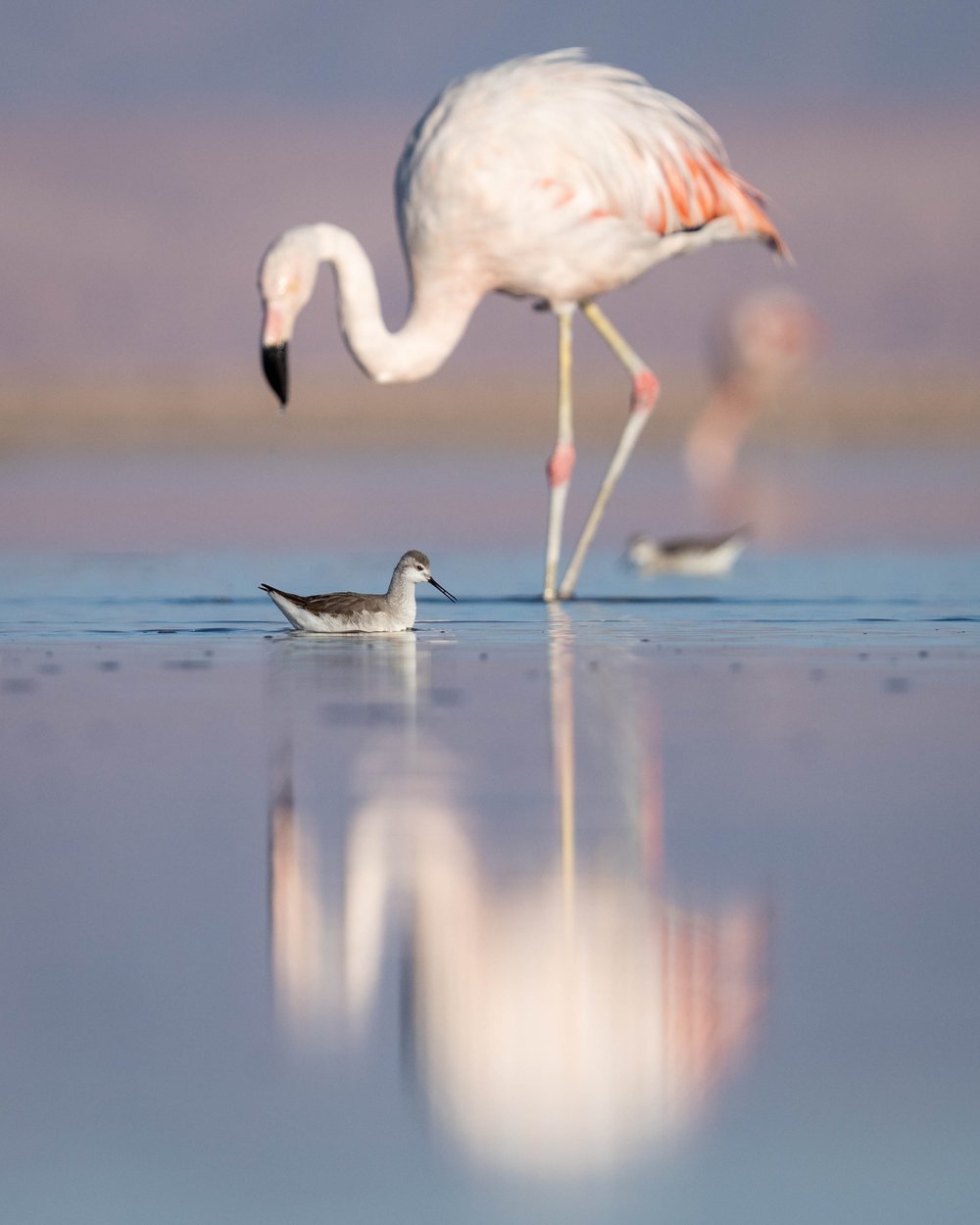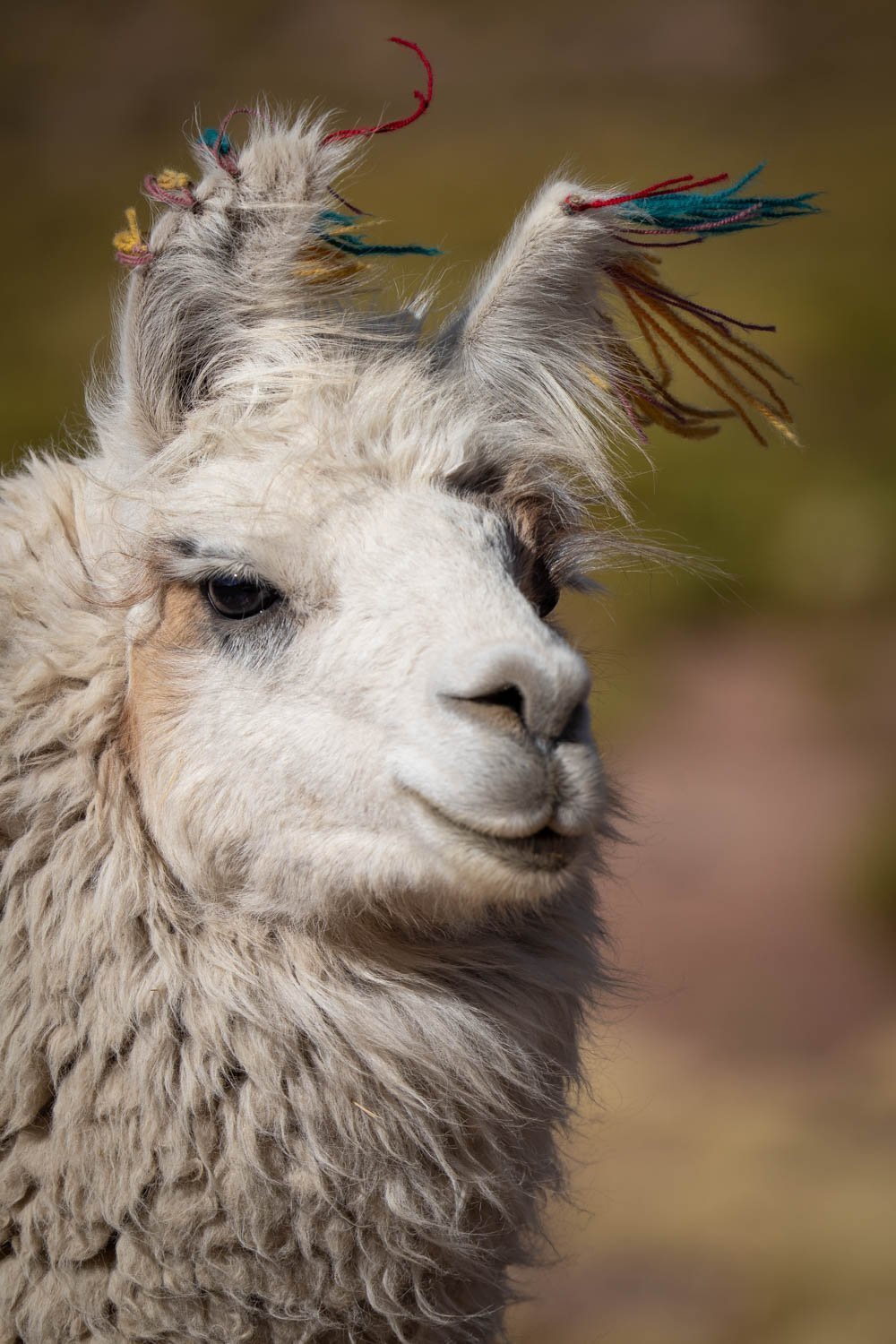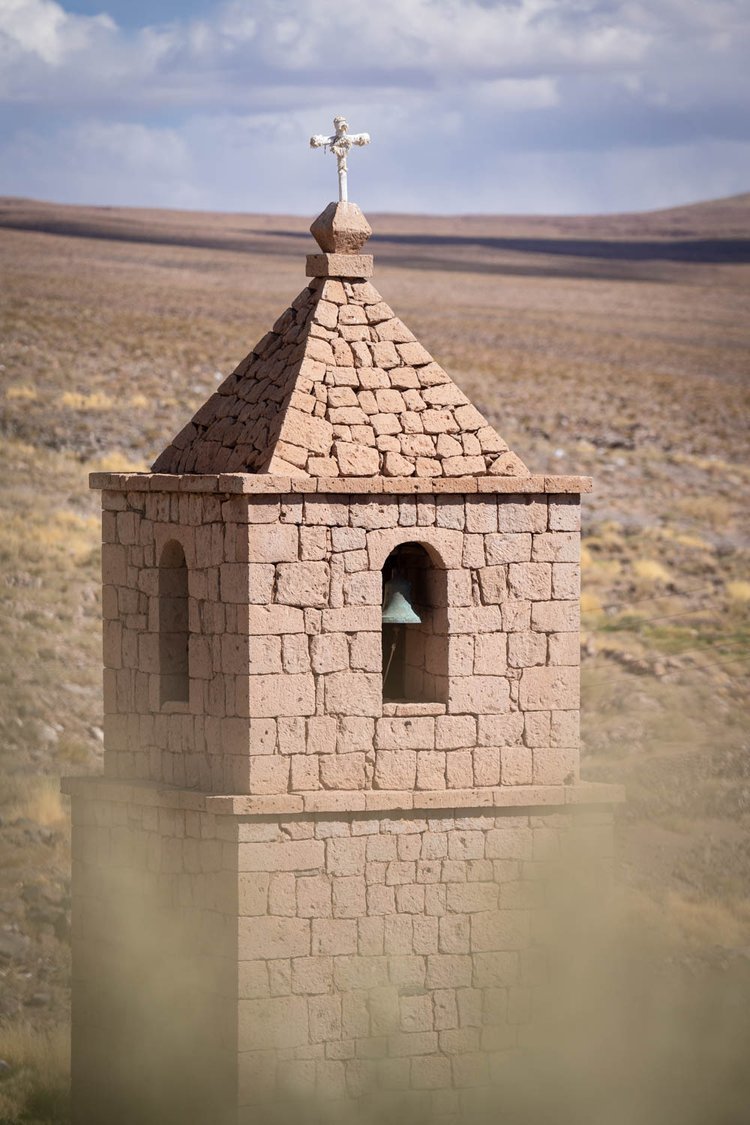atacama
Often compared to the surface of Mars or the moon, Chile’s Atacama Desert is definitely otherworldly in appearance. The Atacama occupies an approximately 1000 mile long strip between the Andes mountains and the sea, and is the driest hot desert in the world (only some regions of Antarctica receive less precipitation). A few areas of the Atacama are considered "perfect" desert in that they've possibly never received rainfall. Despite this extreme aridity, life still manages to thrive. Over 500 species of vegetation can be found here, as well as insects, reptiles, birds, and a few species of mammals. Humans, too, have made a home in the Atacama, with the pre-Inca Atacameño long inhabiting the interior.
The Atacama owes its origin to the rise of the Andes and Coastal Cordillera about 27 million years ago. Its position between these impressive formations is the reason the Atacama receives little precipitation; coastal air masses cooled by the Humboldt Current carry nearly no moisture from the west beyond fog and the Andes act as a barrier to warmer air masses from the east. What scarce rain that does fall works with fierce winds to carve the Atacama's extreme features.
The Atacama salt flat is positioned within a depression created by the ancient rising of the Andes and Domeyko mountain ranges. During wetter periods, salty runoff from the surrounding hills washed into this depression, and during drier periods the salts precipitated out during evaporation. The salt crust is composed largely of halite, interspersed with brine cavities containing lithium, boron, magnesium and other minerals.
Plant life in the Atacama consists of mostly low, wind-resistant vegetation and cacti. Plants must be able to withstand intensely dry, and often salty, soil and wide ambient temperature swings. Mammals must be just as hardy. The vicuña is a small, wild camelid native to the central Andes. In the Atacama, vicuña feed on tough, nutrient-poor grasses, and will drink saltwater to supplement mineral intake. Predators include pumas and the fox-like culpeo.
Three different species (Chilean, Andean and James's) of flamingo gather in the thousands in the Atacama's high altitude saline lakes, their delicate-appearing forms contrasting with the harsh surrounds. They are here for the food: brine shrimp, marine algae and diatoms, all of which contain the carotenoid pigments that lend the flamingos their pink hue. They are also here to breed, with monogamous pairs working to build their conical mud nests and care for their young.
Besides flamingoes, a varied population of other birdlife occurs in the Atacama: the ostrich-like rhea, the coastal-dwelling Humboldt penguin, and the critically endangered Chilean woodstar hummingbird have all carved out a living. Puna plovers (below left) seize insects and crustaceans in the shallows of salt lakes, while the Wilson’s phalarope (below right) pulls its food to the surface by spinning in circles.
Humans have inhabited the Atacama desert's oases and coastal areas for millennia. The Chinchorro culture-famous for its mummification and funerary practices-developed in the Atacama between 7000 BCE and 1500 BCE and the origins of the Atacameño culture can be traced back to 500 AD. At the start of the 15th century, the Atacameño were conquered by the Inca, who introduced a new social order and customs. In 1536, the first Spanish conquistadors arrived in the Atacama; their influence on culture is most dominant today. The llama, a domesticated cousin to the vicuña, still provides wool and meat.

